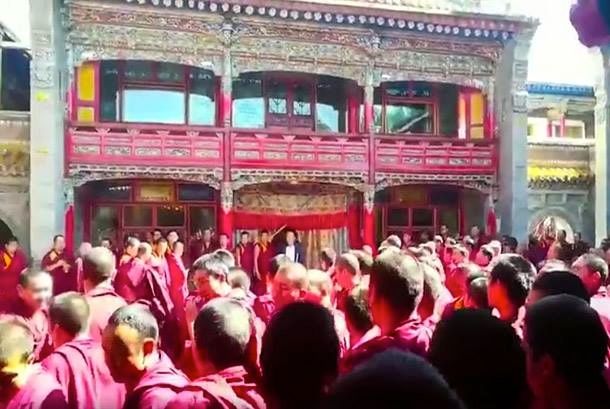 Dharamshala — Chinese authorities are planning to turn the famous Kumbum Monastery in Northeastern Tibet in to a museum and tourist destination, according to reports from the region.
Dharamshala — Chinese authorities are planning to turn the famous Kumbum Monastery in Northeastern Tibet in to a museum and tourist destination, according to reports from the region.
Kumbum Monastery, located in Huangzhong County in Qinghai Province, the traditionally Amdo region of Tibet, has a history of more than 600 years. Dedicated to the great Je Tsongkhapa, the founder of the Gelukpa school of Tibetan Buddhism, the monastery is, according to legends, built around a tree that is said to be the great religious leader's birth place around the year 1357.
The project to turn the historical monastery into a museum and tourist destination is meeting strong protest from the local community, including a self-formed committee of monks and locals, who in response have composed a 9-point letter of protest and sent it to the local district level government of Huangzhong County.
Citing the deep reverence for the monastery and it's value to Tibetan Buddhism, the letter states, "With it's 600 plus years of history, Kumbum Monastery is revered both inside and outside of Tibet. We strongly oppose any changes made to this holy site."
A large problem the community complains of is that as the monastery becomes a tourist destination, it will make visiting the monastery for religious practice very difficult. "From Kumbum's long history, there are hundreds of thousands of valuable artifacts inside the monastery that are admired by Tibetans, who practice making offerings and praying to these religious relics. As this historical site gets turned into a business, it will make paying religious homage to this site difficult. For our history, we cannot allow these plans, and we should be able to make homage and visit the monastery as we like."
"In reality, it is the Chinese government's duty to protect these ancient and valuable relics. Right now, locals are abiding Chinese law and following authority's guidelines, however if these plans press forward, this committee will not take responsibility for what will happen in response."
Though from this developing situation it is unclear what will happen to the monastery, locals and the monastery's monks have made it clear that they oppose any changes to the monastery.


![Tibet has a rich history as a sovereign nation until the 1950s when it was invaded by China. [Photo: File]](/images/stories/Pics-2024/March/Tibet-Nation-1940s.jpg#joomlaImage://local-images/stories/Pics-2024/March/Tibet-Nation-1940s.jpg?width=1489&height=878)















